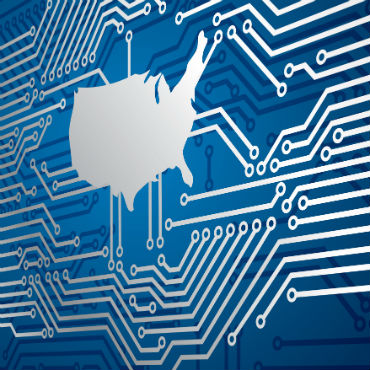Network maps, moisture maps and stalled job growth

News and notes from around the federal IT community.

Network mapping tech licensed by DHS
The Department of Homeland Security's Science and Technology Directorate licensed an Arlington, Va., company to sell its software-based network mapping security technology to the commercial market.
The Network Mapping System (NeMS) tool, developed by Lawrence Livermore National Laboratory, can tell users what is connected to their network so they know what needs to be protected. S&T officials said they have licensed NeMS to Cambridge Global Advisors, a strategic advisory services firm.
NeMS is the third technology to be licensed to a commercial provider under the agency's Transition to Practice program, which operates under S&T's Cyber Security Division. NeMS was identified as a candidate for commercial transition in 2012, the program's inaugural year.
Since then, officials have determined that 24 technologies (eight in fiscal 2013, nine in 2014 and seven in 2015) were ready for transition to the marketplace. Three of them -- the next-generation Quantum Secured Communication encryption system, the Hyperion malware forensics detection and software assurance package, and NeMS -- have successfully made it to the commercial licensing phase.
In the next few months, S&T will introduce eight new technologies into the program's fiscal 2016 class and showcase them to critical infrastructure operators and potential investors. Officials said the next tech demonstration will highlight offerings in the financial sector and is slated for Aug. 19 in New York City.
Agencies team up to fight fires from space
The Agriculture Department and NASA are joining forces to fight wildfires using satellite imagery.
USDA's deputy secretary and NASA's deputy administrator met at NASA's Ames Research Center in Mountain View, Calif., on July 16 to formalize their agencies' cooperation, which could have an outsized benefit to the Golden State.
USDA touted the potential for its use of NASA satellite imagery to create a "moisture map" of California to aid in tracking droughts in the state. NASA noted that new satellite tools would enhance the view of forest fires.
Since the early 2000s, NASA's satellite data products have produced observations with a resolution of 3,280 feet, but the Suomi National Polar-orbiting Partnership's Visible Infrared Imaging Radiometer Suite brings that focus down to 1,230 feet, which improves the tracking of smaller fires and helps predict how fires will develop and move, NASA said in a news release.
Both agencies said the partnership could cut down on the $1.5 billion the Forest Service and Interior Department spend on wildfire suppression each year.
IT security workforce growth slows
Growth in the information security workforce was stagnant for the first half of 2015, according to a GovInfoSecurity report that analyzed federal employment data.
A study by IT security certification organization (ISC)² concluded that there will be a shortage of 1.5 million IT security professionals worldwide in the next five years.
According to the GovInfoSecurity report, 73,800 people are working as information security analysts in the second quarter of 2015, which is essentially the same as the first quarter of 2015.
By contrast, the workforce of IT security analysts grew in the second quarter of 2014 from 55,300 to 74,000.
A growth of 62 percent in the IT security workforce in the past 3 1/2 years, while significant, is not enough to meet the demand for workers in the public and private sectors, according to the report.
When (ISC)² surveyed security professionals, more than six in 10 said their organizations could use more professionals in that field.
NEXT STORY: White House plugs plan to boost immigration IT


